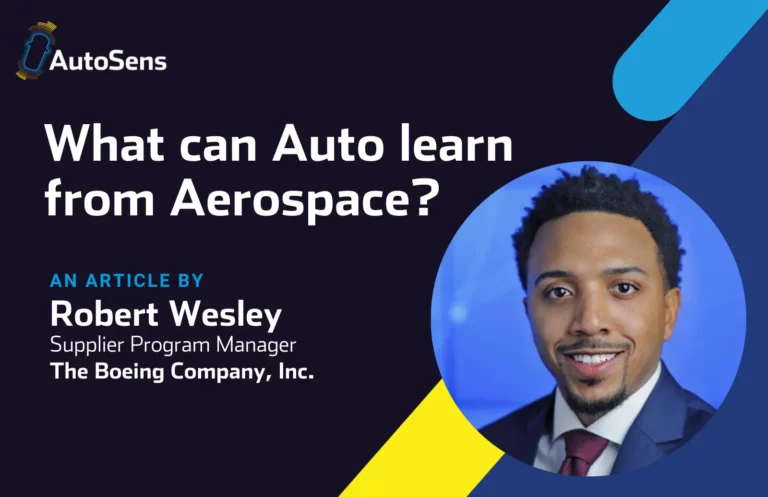We are delighted to have Radovan Miucic, Technical Fellow and Team Lead, Changan US R&D Center, Inc. in the speaker line-up at AutoSens in Detroit 2019. He will be guiding the AutoSens audience through “V2X Collaborative Environmental Perception.” We took some time out to talk with him all about V2X, his teaching at Wayne State and his view on the challenges our industry will be facing over the next 10 years and beyond.
 Dr. Miucic has been at Changan US R&D since 2015, in Connected and Autonomous Vehicle group. Radovan Miucic received the B.S., M.S. and Ph.D. degrees in computer engineering from Wayne State University, Detroit MI, in 2001, 2002 and 2009, respectively. He worked as research engineer for Honda R&D Americas, Inc. (2007-2015) and as an embedded software engineer (2001-2007), working for Delphi and Siemens. He is also Adjunct Professor of ECE at Wayne State University since 2012. His current research is in wireless communication, sensors for autonomous driving, and development of cooperative safety applications and autonomous driving features.
Dr. Miucic has been at Changan US R&D since 2015, in Connected and Autonomous Vehicle group. Radovan Miucic received the B.S., M.S. and Ph.D. degrees in computer engineering from Wayne State University, Detroit MI, in 2001, 2002 and 2009, respectively. He worked as research engineer for Honda R&D Americas, Inc. (2007-2015) and as an embedded software engineer (2001-2007), working for Delphi and Siemens. He is also Adjunct Professor of ECE at Wayne State University since 2012. His current research is in wireless communication, sensors for autonomous driving, and development of cooperative safety applications and autonomous driving features.
Chang’an Automobile is a Chinese automobile manufacturer headquartered in Chongqing, China, and a state-owned enterprise. Its principal activity is the production of passenger cars, microvans, commercial vans and light trucks. The Changan US R&D Center, a US-based subsidiary, wholly owned by Changan Automobile, began operations in January 2011 in Plymouth, Michigan. It is the first research and development center to be established by a Chinese automaker in Michigan. It joins Changan’s other global R&D centers located in Turin, Italy; Yokohama, Japan; Birmingham, England; and Chinese centers located in Chongqing, Shanghai, and Beijing.
Your presentation covers Changan’s implementation of a collaborative environmental perception system. Can you give us a brief overview of this system ahead of the presentation?
Our implementation of collaborative environmental perception system combines V2X communication with several sensing devices: GPS, DSRC, and forward-looking camera. We performed the study with four well known cooperative safety applications: EEBL, IMA, BSW and LTA. This technology has the potential to enhance V2X market penetration, which will enable all its safety benefits.
Why are you a proponent of V2X market penetration? What are the benefits?
V2X is the only technology that can sense vehicles and pedestrians in non-line of sight. A job of environmental perception is simplified if vehicles and pedestrians use V2X. NHTSA estimates that safety V2X applications could address up to 80 percent of non-impaired crashes. It is a next thing to do in automotive safety to address alarming traffic related fatalities (37,416 traffic related fatalities in US in 2017).
You teach some courses at Wayne State. What concepts do your students find the hardest to get their head around?
Given that V2X is proven and tested, many students wonder “Why V2X technology has not been adopted yet?”
What do you think can be done to address the shortage of talent in the industry?
More education that is based on the industry needs, more clear vision for the future defined by the tech and automotive companies to provide motivation for the young engineers, and allowing more creativity and autonomy of thought within the companies to allow engineers to innovate and excel.
You have worked in automotive for over 10 years, what are the main differences in the challenges being faced now to 10 years ago? Looking ahead 10 years, what challenges do you think will remain and what will still need work?
Automobile industry is going through a change; vehicles are increasingly more complex machines with every new model. Development speed of new feature in the automobile used to be much slower than the speed of consumer electronics, but this gap is closing due to consumer expectations and competitiveness between car companies. Automotive companies now need more software engineers to keep up with development needs.
One of our discussions at AutoSens will center around “The engineers tell us that autonomous driving is still at the research stage. The product managers tell us that robo-taxis are launching this year. Can both of these be true?” Do you have any thoughts around this statement?
Today in the world there are no more than 1000 L4 autonomous vehicles on public roads still being tested and researched. There are robo-taxi companies with L4/L5 driving runs on the road, some with very low speed (less than 25MPH). Virtually all of these vehicles still have backup drivers in them. Promises and reality often differ but the change is definitely coming.
Come and hear Radovan Miucic with his session on “V2X Collaborative Environmental Perception” at AutoSens in Detroit 2019. Book your tickets here >>







